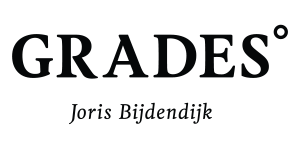Tableware
Hotel porcelain in the quality of Nova hard porcelain, Nobel Vitreous porcelain and Nobel Fine Bone China
Jos ten Berg BV specializes in supplying hotel porcelain and stoneware.
Hotel porcelain in multiple designs and decorations
Hard porcelain
The brands Nova , Churchill , Pullivuyt , Serax , RAK porcelain and Walkure are part of the hotel porcelain delivery program. Jos ten Berg BV also offers you the option to apply your vignette / logo to porcelain. Your vignette/logo will be underglazed, making it microwave oven safe and dishwasher safe.
Jos ten Berg BV supplies hotel porcelain Nova in various models, such as model hotel porcelain Nordika , hotel porcelain Ocean , hotel porcelain Opera , hotel porcelain Isola , hotel porcelain Saturno , hotel porcelain DUO , hotel porcelain Cafélegante , hotel porcelain Universal , the coffee cup and saucer from Jan des Bouvrie , hotel porcelain Pisa / Roma / Marina and hotel porcelain Eclipse . In addition, the hotel porcelain can be supplied with various decorations. Nova hotel porcelain is also available in different colours. This can be found, among others, in the hotel porcelain series of Mix & Match , Cafélegante and Color Me !.
Vitreous porcelain
Vitreous porcelain is the English name for Feldspar porcelain. Our hotel porcelain Nobel Extra Durable model and hotel porcelain Nobel Bits & Bites are available in this super strong quality. This model is characterized by its strength due to the addition of aluminum in the porcelain. This model also has a unique color called "off white".
Bone China
Nobel Fine Bone China is available in a chic, slim and thin version. Bone China distinguishes itself from hard and vitreous porcelain by the 45% addition of ground bone ash (Calcium phosphate) in the raw material. This makes Bone China stronger than hard and vitreous porcelain, making it ideal for professional use even in thinner versions. Nobel Fine Bone China has a slightly "off white" tint and the body is very transparent.
How is hotel porcelain made?
The raw materials of porcelain and the composition of the porcelain raw material
Nova Hard Porcelain
The three components of (hard) hotel porcelain are kaolin, feldspar and quartz. Quartz and feldspar each make up 25% of the porcelain mass, kaolin 50%.
Nobel Vitreous porcelain
In Vitreous porcelain the quartz and feldspar components are higher.
Noble Fine Bone China
Bone China consists of approximately 57% of the three components of hard porcelain and approximately 43% of ground bone ash.
Quartz and feldspar are ground for eight hours in a drum mill containing water and stones. The resulting liquid mixture is passed through a sieve and past electromagnets to remove coarse pieces and possibly minute iron particles, which could cause quality defects in the final product. Then the kaolin is added. The resulting sludge is still moist and liquid. To ensure that the water disappears, this mixture is passed through a filter press, which squeezes out the water and leaves the mass of solid parts (= moist porcelain raw material). This mass is called filter cake. Part of this filter cake is passed through a vacuum press. There the mass is deaerated and passed on to the production department in the form of a flexible, elongated “loaf”. These “loaves” are used for the turning technique process. The other part of the filter cake is ground and processed into a kind of sludge with water, residual mass and a diluent. This casting clay is used for casting in molds (liquid clay).
Making molds.
New molds for producing tableware are first modeled in plaster. Plastic molds (positive and negative) are made from the plaster model. Working molds for the plaster tableware are now cast from the plastic molds. The base pieces of the porcelain products are now turned or cast with these work molds. The working molds for producing the tableware are made in the factory (own production).
Production and design method. There are three methods for making hotel porcelain/tableware products:
Turn
Round, symmetrical porcelain parts, such as cups, goblets and saucers, are generally turned. The porcelain mass is placed in a plaster mold. The external shape of the tableware part (e.g. pie shapes, dishes, etc.) is formed by the plaster mold. The inside is formed by a metal inner mould. The mold with the porcelain mass is then passed through a dryer, so that the formed product releases from the plaster mold and it can be removed from the mold.
To pour
Cast items are generally non-round items, such as jugs and oval dishes. a) Casting by hand. The casting clay is poured into a plaster mold. The plaster absorbs the water from the casting clay and the porcelain mass adheres to the edge. The excess casting clay is poured off and used again. Then the shape (e.g. a milk jug or coffee can) is guided through the dryer. After drying, the cover mold is removed from the plaster mold and the edge of the porcelain product is cut. The porcelain product is removed from the mold and, if necessary, the spouts formed are cleaned by pouring out the remaining casting clay. b) Pressure casting system The casting clay is pressed into a plastic mold under high pressure. The water is extracted from the casting clay. In order to remove the crockery from the mould, water must be added to the other side of the mold. The porcelain part is removed from the mold using a piston. In particular, tablets and large porcelain parts such as GN dishes are manufactured using this method.
Press
Predominantly plates and saucers are pressed. Granulate consisting of porcelain mass (supplied) with a low moisture content (composition is the same as casting clay) is sent between a metal mold and a plastic membrane. The very high pressure exerted on the granulate gives the tableware its strength and shape. After this production phase, the protruding edges of all tableware must be polished and damp-sanded.
Ruwbrand (1st fire)
Once the sides and edges of the crockery have been cleaned, they are heated, i.e. burned for approximately 24 hours.
The rough firing temperatures are for the following types of porcelain;
Nova Hard Porcelain: 900ºC.
Nobel Vitreous porcelain: 1250ºC.
Nobel Fine Bone China: 1250ºC.
Due to the heating, some of the still encapsulated water of crystallization and other organic parts escape. The products are then stripped of dust.
Glazes (with a layer of glass)
The glaze mass contains the same composition as the porcelain mass, but with a slightly increased proportion of feldspar. Water is added to the ground powder. This mixture is finely ground in a drum mill for approximately 90 hours. The pre-annealed, dust-free and stamped porcelain parts pass through the glazing machine. The solid particles remain attached to the annealed porcelain parts. Due to the glaze, the surface of the tableware is later protected by the glassy top layer. After glazing, the protruding edges at the base of the glazed parts are polished to prevent the product from sticking to the oven plate during firing.
Final branding
After glazing, the crockery is provided with a bottom stamp using transfers (adhesive plates) and placed again on trolleys. The wagons are now guided through the special glaze firing oven. The porcelain is heated for approximately 24 hours at a maximum temperature of 1400ºC. fried. The porcelain shrinks by approximately 1/6 during burning. This must be taken into account when designing new molds.
The temperatures of the final glaze firing are for the following porcelain types;
Nova Hard Porcelain: 1420ºC.
Nobel Vitreous porcelain: 1100ºC.
Nobel Fine Bone China: 1050 - 1150ºC.
Decoration:
1.By hand.
Hand painting is limited to simply painting edges with color or precious metal, or to applying an entire decoration in precious metal with special brushes.
2.Printing.
This is one of the most important decoration techniques. The decorations printed on special paper, in particular the customer-specific logos, are applied to the glazed tableware via adhesive plates.
3.Spraying.
This is also one of the most important decoration techniques. The color is applied to the crockery in entire areas via spray guns by either spraying by hand or via spray robots, depending on the type of item or quantity.
Burning the decorations:
The decorated tableware still needs to be fired to make the color or decoration durable. Precious metal decorations and decorations with some bright colors are mainly fired with an additional oven cycle at approximately 850 degrees Celsius. These decorations are dishwasher safe. Most of our colors and decorations are fired using the glazing method at approximately 1200 degrees Celsius. The advantage is that at this temperature the glaze layer melts slightly and the color penetrates into the glaze layer and is therefore better protected. Such decorations on tableware made using this method are therefore absolutely dishwasher safe.
If you would like more information about hotel porcelain, please contact us and inquire about the possibilities, or visit our showroom in the center of the country and be informed by our sales advisors.











































